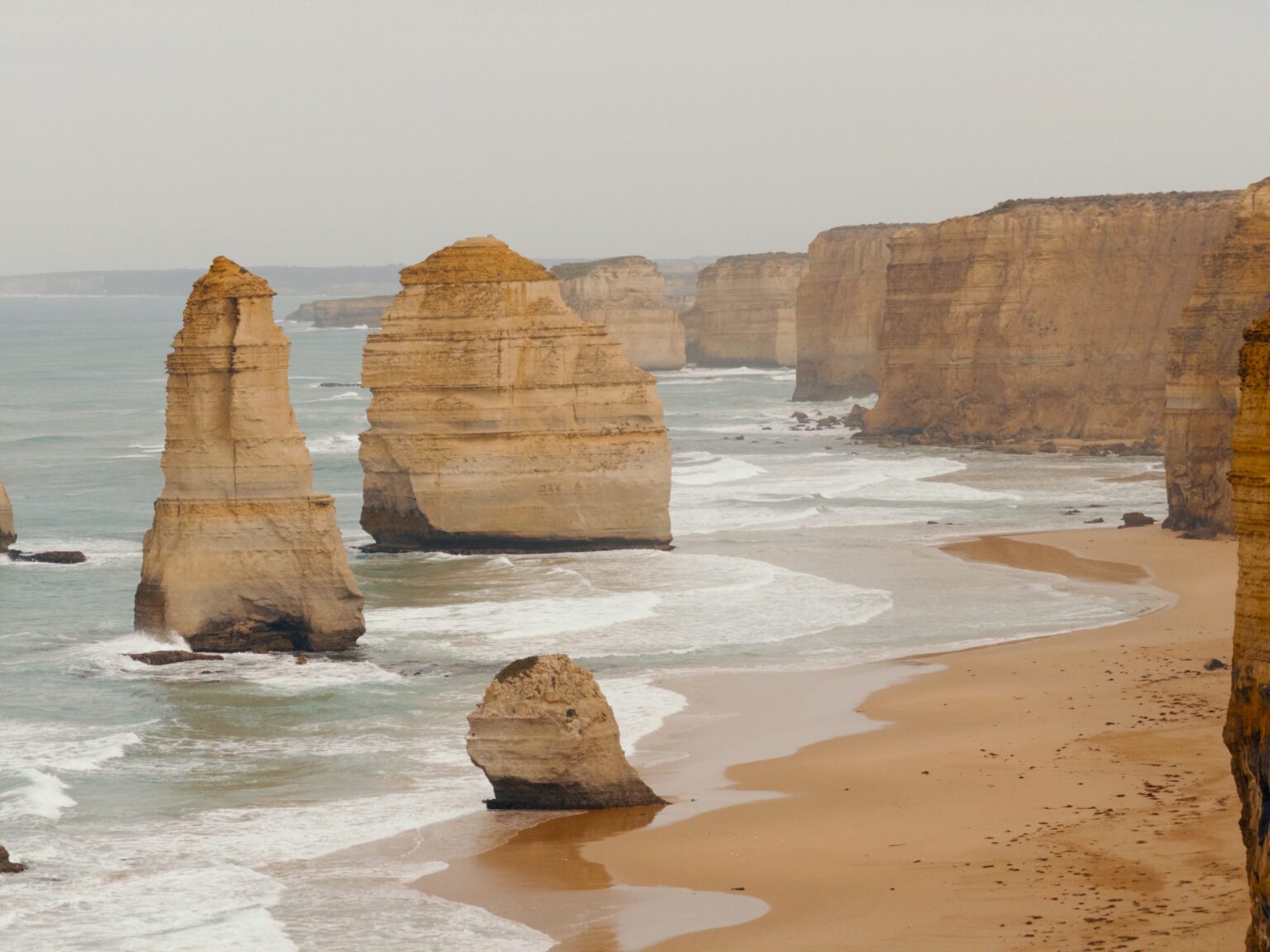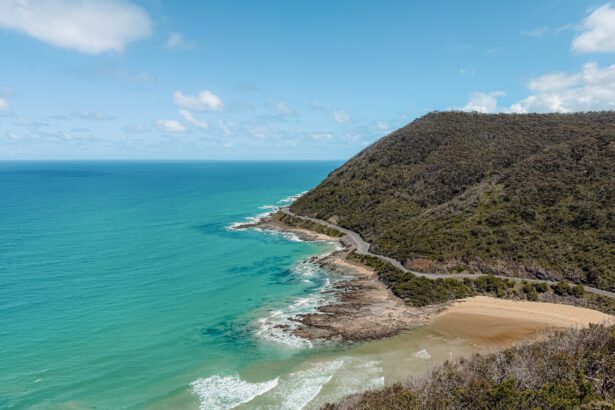The Great Ocean Road is one of the great road trips to do in Australia and takes you through some picturesque and quaint towns, along beautiful beaches, and by amazing formations and landscapes that really highlight the beauty of Australia. And as a bonus, you even have the opportunity to see some koalas!
This road trip departs from Melbourne and winds along the southern Australian coast of Victoria. The road trip can be done in a very rushed one-day drive or with a tour but to truly take in some of the iconic sites and appreciate the coastal lifestyle of this region, you need to take 2 or more days along the road, stopping in the little towns and beaches along the way.
The original road trip along the Great Ocean Road is a there-and-back trip, meaning that you are driving on the same road in both directions. We talk about some other options that you have below but if you are just doing the Great Ocean Road, you can split up the stops between the two directions to break up the driving both to and from Melbourne.
All the Best Stops Along the Great Ocean Road
Queenscliff (Optional - Will Add 1 Hour to Your Drive)
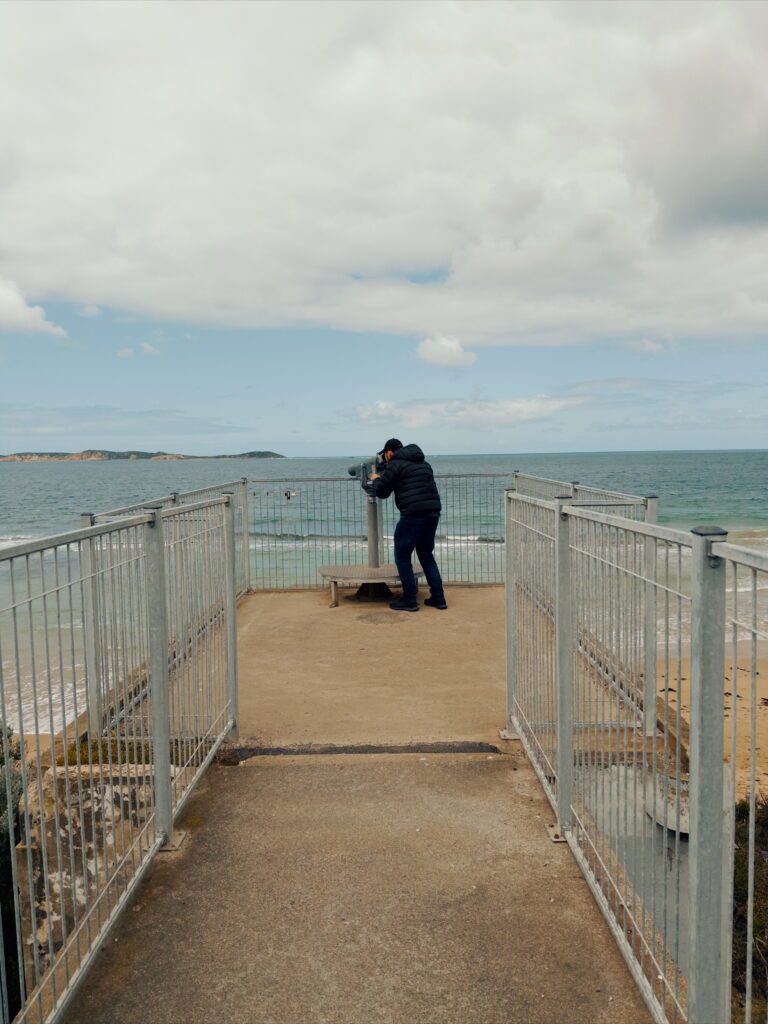
Queenscliff, while not officially on the Great Ocean Road, is a quaint ocean town along the route that leads to the official route. It is a great place to start your adventure along the road. The Queenscliff Lookout gives a nice view of the ocean,beaches, and bay in which Melbourne lies. Beyond looking at the ocean, the town itself is picturesque and you can explore the different shops, boutiques, and cafes located along Hesse Street, such as Rolling Pin Pies & Cakes with delicious and unique pies to start your day.
Torquay - the Official Start of the Great Ocean Road
Memorial Arch at Eastern View
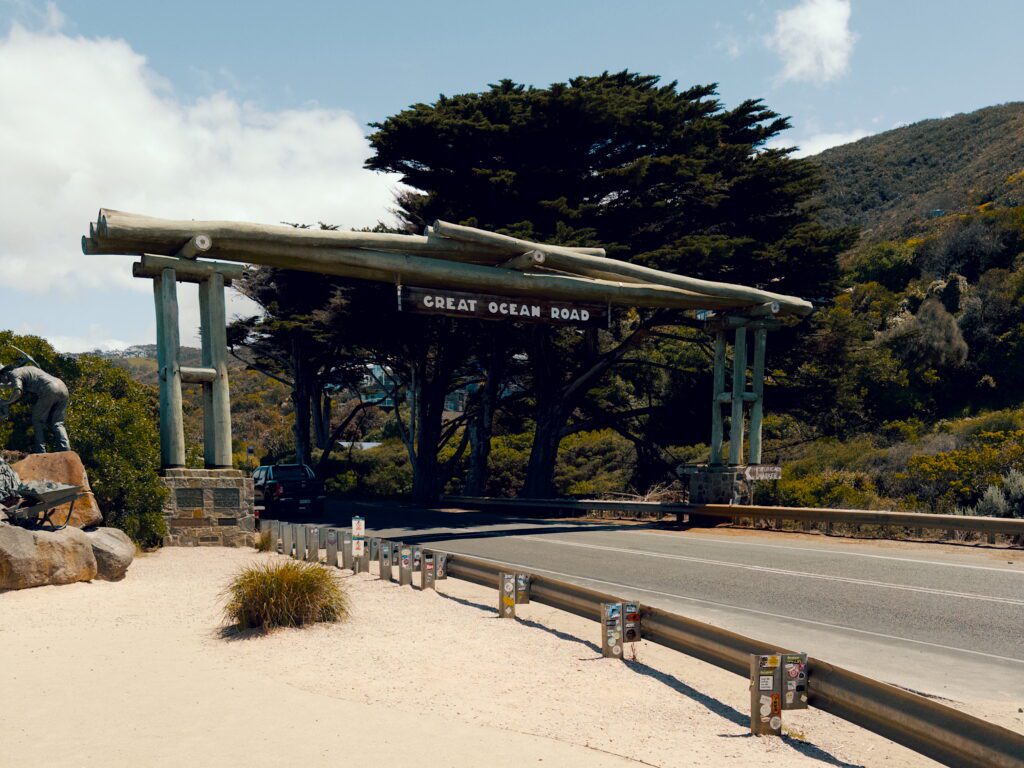
The Great Ocean Road was constructed by soldiers who returned from World War I and was dedicated to those killed during that war, making it the world’s largest war memorial. The Memorial Arch is that landmark reminder of the history of the road and is a nice photo opportunity to mark your time on this iconic pass in Australia.
Lorne
Lorne is one of a number of towns that line the coast of this portion of Australia. They each have beautiful beach access or views and are lined with cafes and seafood shops for you to enjoy. Lorne has a long and beautiful beachfront and a lawn front where you can enjoy the view and the ocean air.
The Great Ocean Road marathon and running festival occurs during the month of May and is a popular time to explore the area. The other big holiday occurs around New Years Eve with the Pier to Pub swim event which is a 1.2 kilometer open swim (one of the largest in the world) and attracts thousands of visitors.
Teddy's Lookout
Teddy’s Lookout is an incredible view over the coastline of Australia. To get to the viewpoint, you can drive up the hill from the town of Lorne to the designated carpark (parking lot in American English) and walk to the edge of the viewpoint. On your walk to the viewpoint, make sure to look at the wildlife around and above you. You never know what you may see! This area has kookaburras (the national bird of Australia that make a laughing-like/monkey-like noise) or koalas!
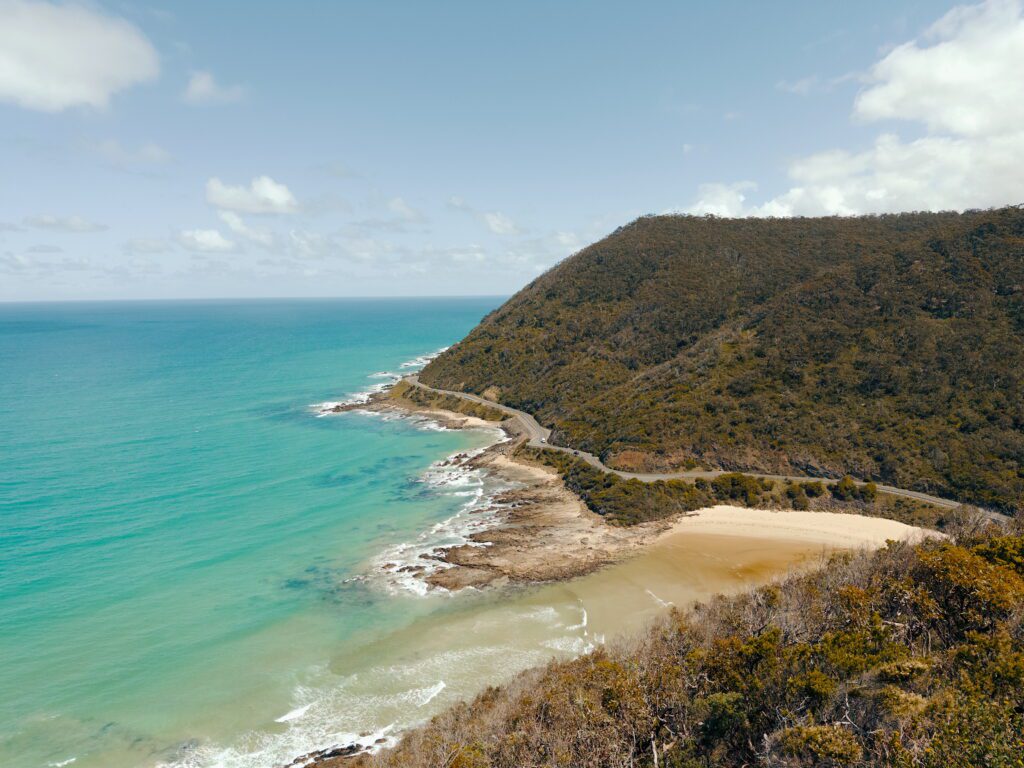
To spot a koala, look up into the branches of a eucalyptus tree. They like to sit in the fork of two branches and near the leaves so they can easily carry out their main two activities, sleeping and eating. You will see a greyish-brown ball of fur. They are the size of a 1 year old.
Kafe Koala and the Kennett River Nature Walk
If you are interested in seeing more wildlife, the area around the Kafe Koala is a nice place to start. Kafe Koala itself is a small coffee shop and the workers have a lot of knowledge about where to possibly find different animals in the area. You can park at the cafe and explore the surrounding area by foot. If you go up Grey River Road or walk along the Kennett River Nature Walk, you have the possibility of seeing koalas.
Your best chance of seeing koalas here are earlier in the morning, before the large tour buses arrive. There used to be a plethora of koalas along these paths but unfortunately, tourists heavily disturbed the animals by invading their personal space, touching them, attempting to feed them, etc. for their social media content. This has put a lot of stress on the environment and the animals themselves, driving them away from their natural wildlife.
How to Interact with Wildlife
- Keep a healthy distance between you and the wildlife to not scare or disturb them, especially when they have their young with them. Some animals can be territorial when they are with their young and may be aggressive, such as emus.
- Take photographs without flash. The light from the flash may severely affect their eyesight and, therefore, their ability to survive in the wild.
- DO NOT feed wild animals, no matter how cute they may be. It is important to keep wild animals wild so they can continue to survive without the support of humans. When humans feed animals, the animals are now trained to depend on people and the animals lose their instinct to hunt, gather, and fend for themselves.
- Be quiet to not disturb them
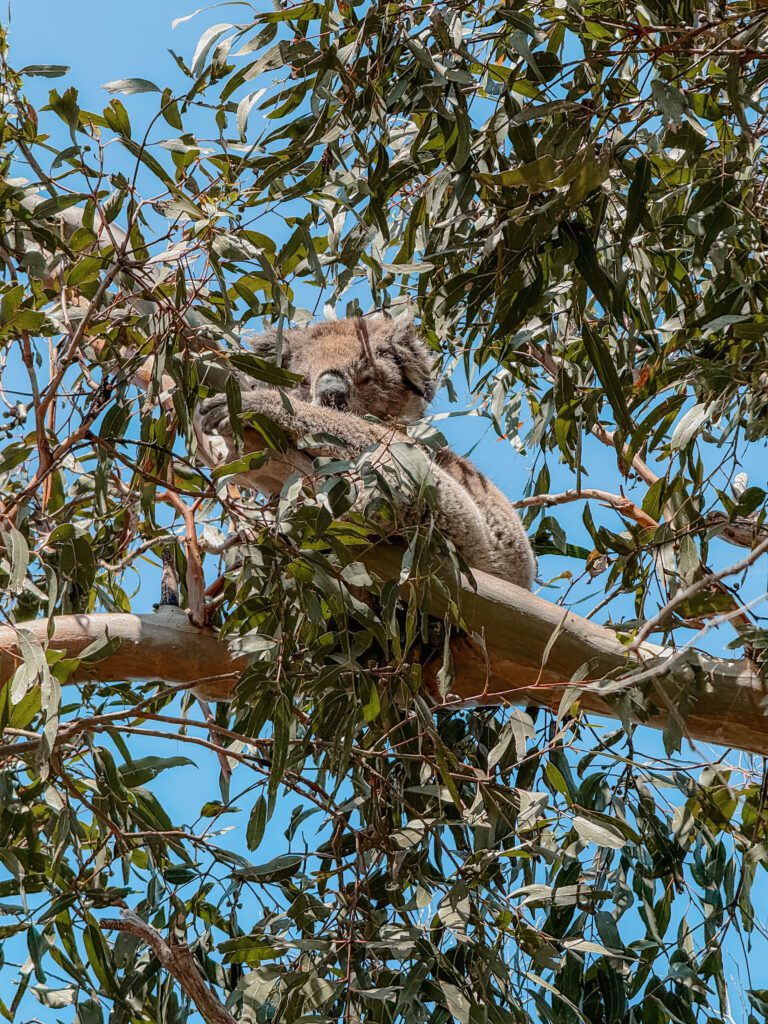
Apollo Bay and Beach
Apollo Bay is another sea-side town with an expansive beach. You can stop here to take in the large beachfront and explore the culture of the beach town. This is also the start of the Great Ocean Walk, a 90 kilometer (60 mile) walk that takes you from Apollo Bay to the Twelve Apostles over 7 days along the beach and coastline. (There are a number of companies that can help organize and guide the walk for you so you don’t have to worry about accommodations or carrying your pack along the hike.) Even if you aren’t doing the full hike, it could be nice to walk along the beginning of the trail to take in the beautiful Australian coast.
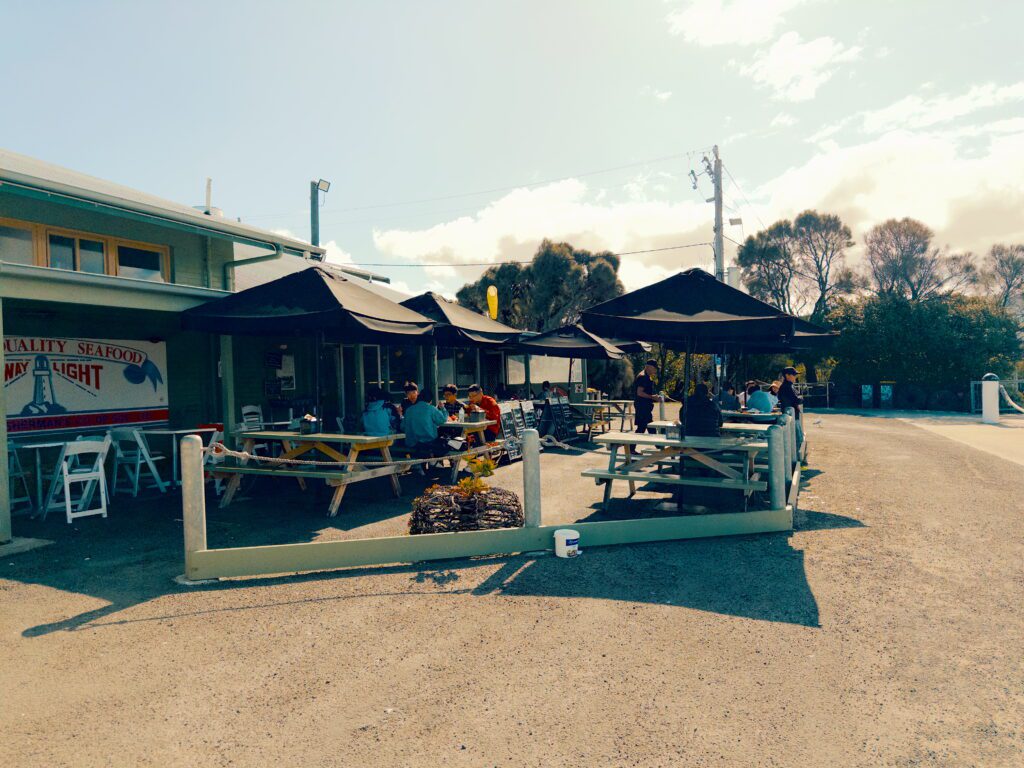
While on the Great Ocean Road, it is imperative to try some fresh seafood if you can. In Apollo Bay, you can stop at the Apollo Bay Fishermen Co-Op, a harbor-side seafood shack that is supplied by the fresh catch of the day by local fishermen. You can sit right on their patio, looking at the ocean, and enjoy the classic fish’n’chips or a seafood platter with a wide variety of different seafood.
Great Otway National Park and Cape Otway Lightstation
This National Park is located along the Great Ocean Road and is worth a stop if you are spending an extended amount of time exploring the coastline. (If you are doing the full drive in 2 days or less, it may not be worth it to stop here). There are a few different walks that you can do within the park but the biggest attraction is the Cape Otway Lightstation. It is the oldest surviving lighthouse on mainland Australia but you do need to pay to access the lighthouse itself and can only access it during the opening hours that are listed online here.
Gibson Steps
The Gibson Steps are a set of stairs that lead you down to the beach where you will have your first vantage of the Twelve Apostles. It is a beautiful view of the famous attraction and a great way to understand just how big the cliff-side of this part of Australia is. There are quite a few steps to get down to the beach but the view is absolutely worth it!
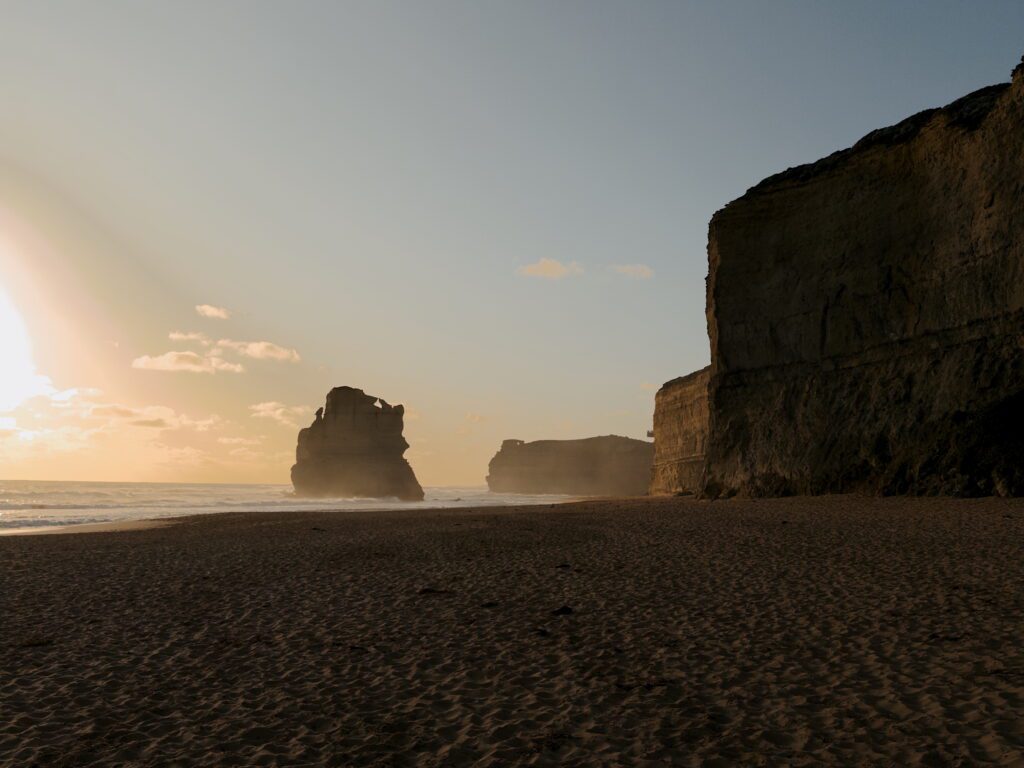
Twelve Apostles
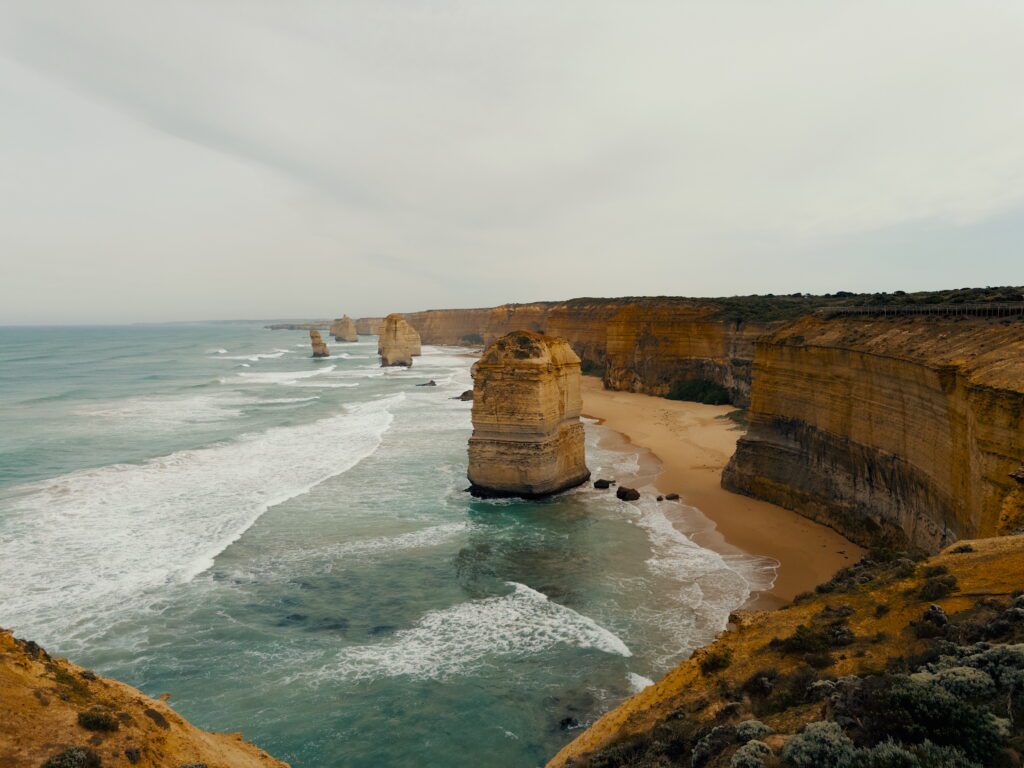
One of the main attractions of the Great Ocean Road is the Twelve Apostles. These great rock structures have been formed through erosion over the last thousands of years and are continuously changing due to the forces of the wind and ocean. Today, eight of the original twelve “apostles” are still standing.
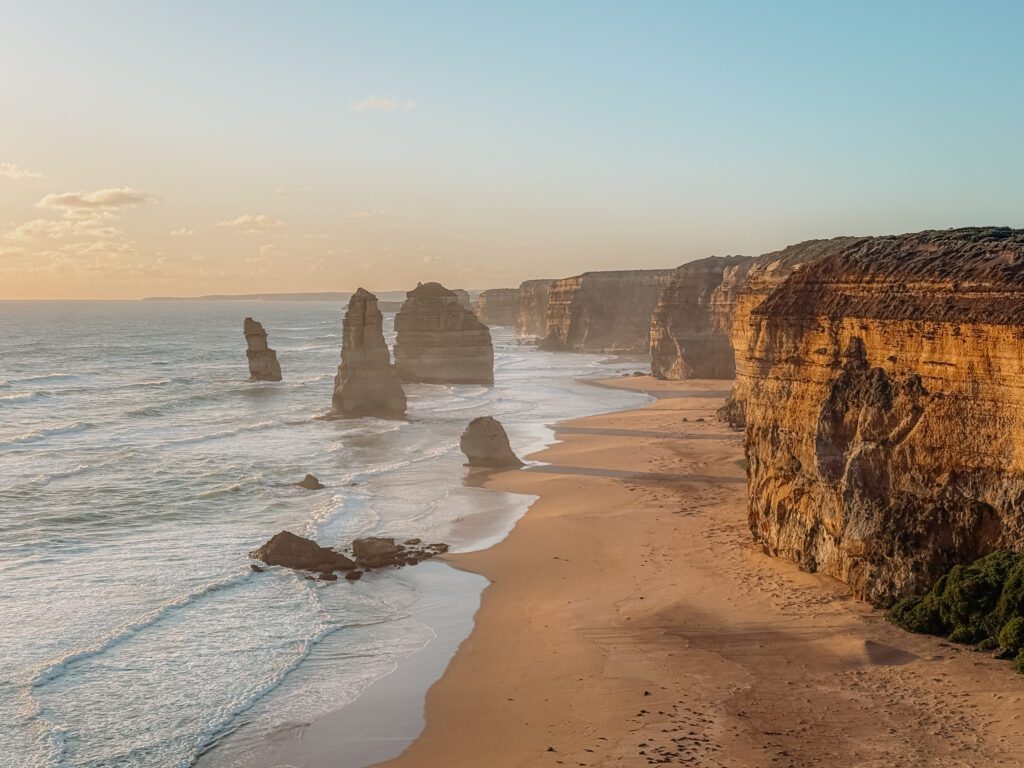
There has been great investment in the infrastructure built to support the viewpoint of this attraction. There is a large parking lot on the north-side of the road. From there, you can follow the path under the main road and onto the large deck that has amazing views of the rock structures.
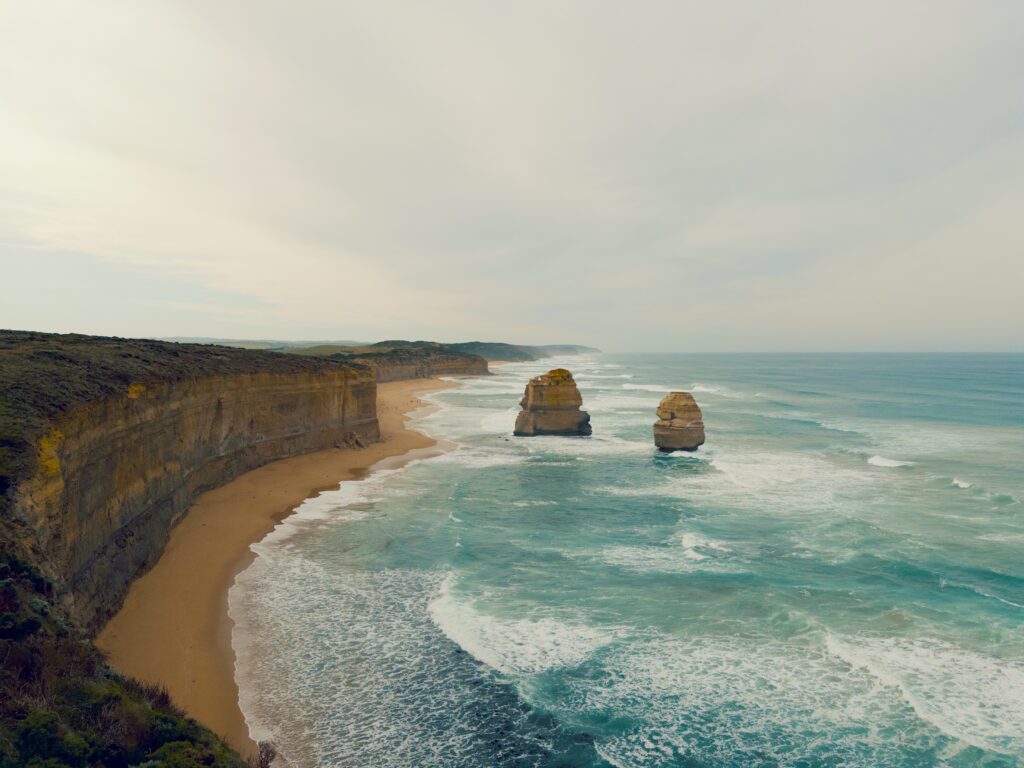
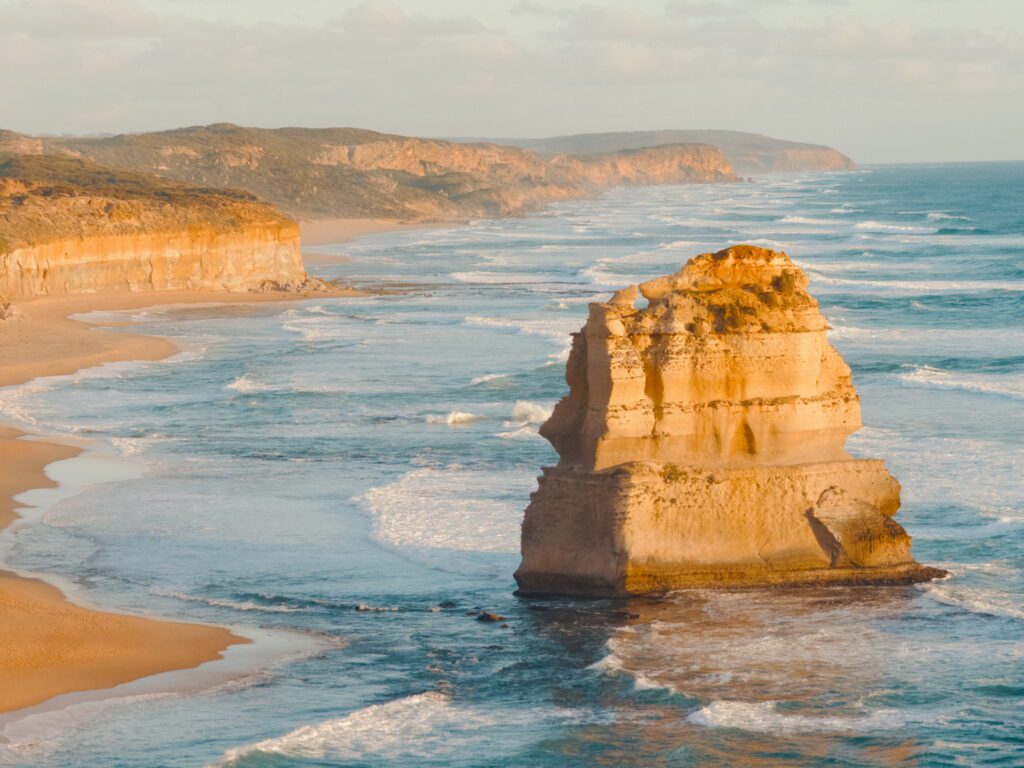
Loch Ard Gorge and Razorback Lookout
The Loch Ard Gorge is a rock formation and the location of the most famous shipwreck along this part of Australia’s coast. The boat, Loch Ard, was shipwrecked in 1878 and had two survivors. The coast here is aptly named shipwreck coast. Today, you can see the gorge that the two survivors climbed out of. It also has a small beach that can no longer be accessed due to erosion that is happening on the cliffside here.
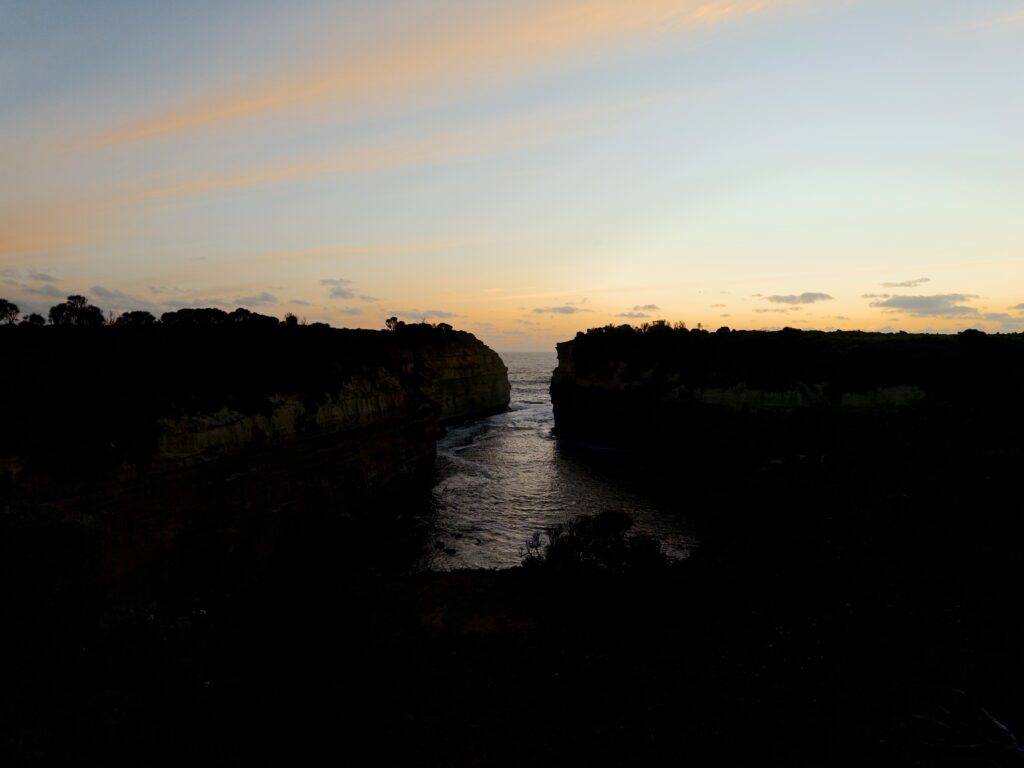
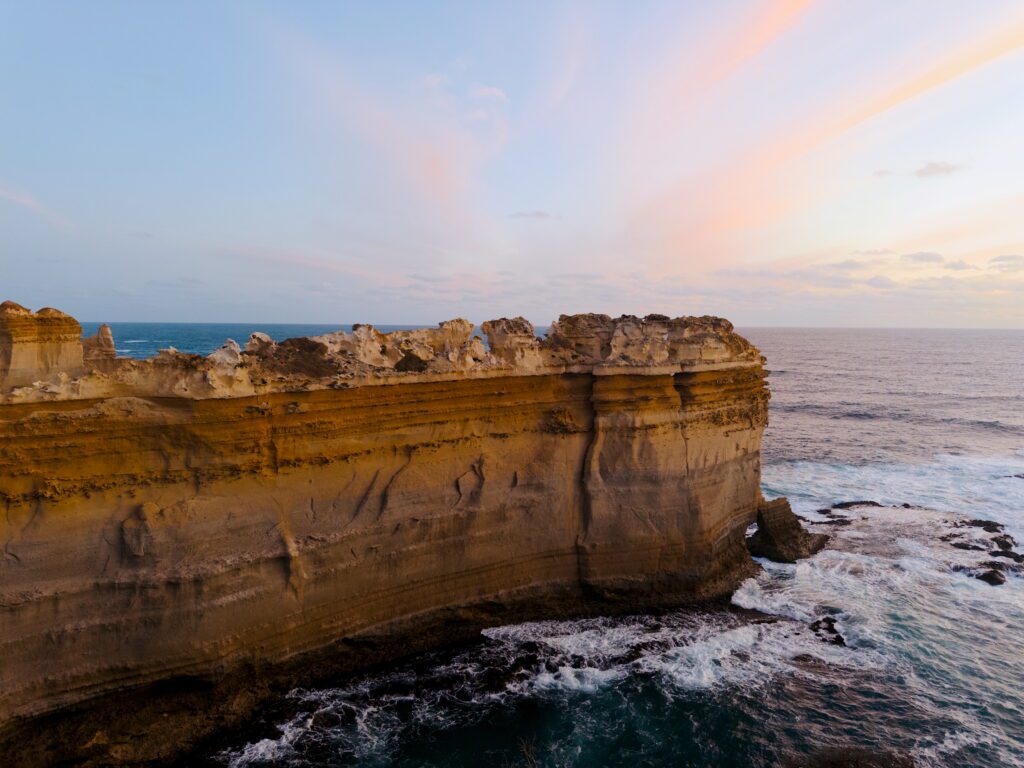
Within the same parking lot as Loch Ard Gorge is the Razorback Lookout, a rock structure that has a sharp “razorback”. You can also see a portion of the Twelve Apostles beyond the Razorback rock structure.
London Bridge
The London Bridge rock structure is the perfect example of how erosion can completely change a landscape. Until 1990, the formation created a double-span bridge. However, the span closer to the shoreline collapsed, leaving the island rock that you see today.
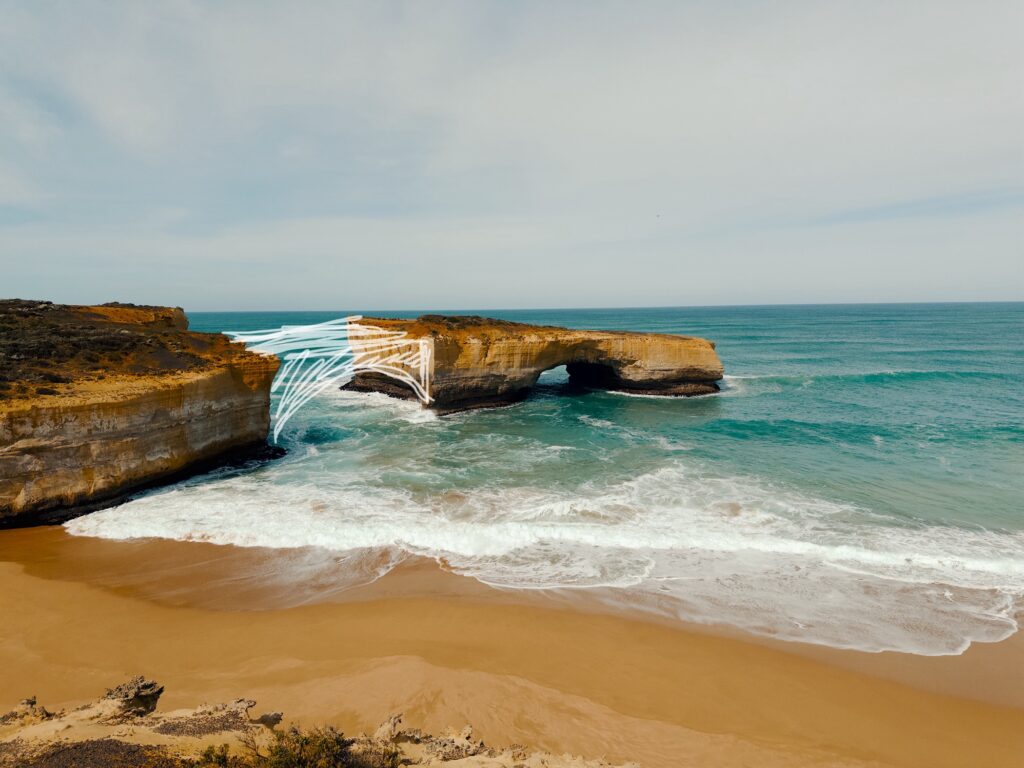
The Grotto
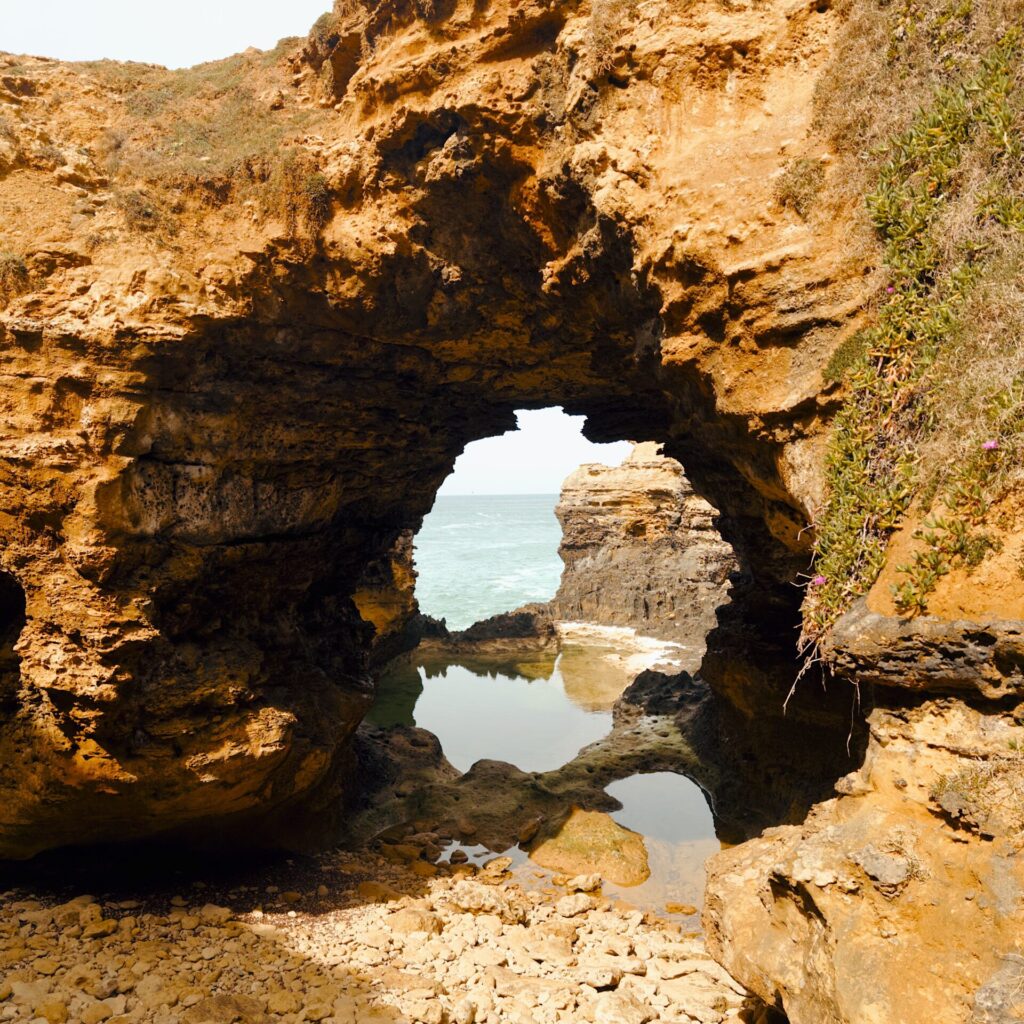
The Grotto is a rock formation that is part blowhole, archway, and cave. The best way to view it is by going down the stairs from the viewpoint’s car park. You may find a line of visitors waiting to take a picture at the bottom of the steps and you can wait your turn to get a photo. The tide and weather can completely change your experience at the grotto and how the waves interact with the rock formations.
Bay of Martyrs and Bay of Islands
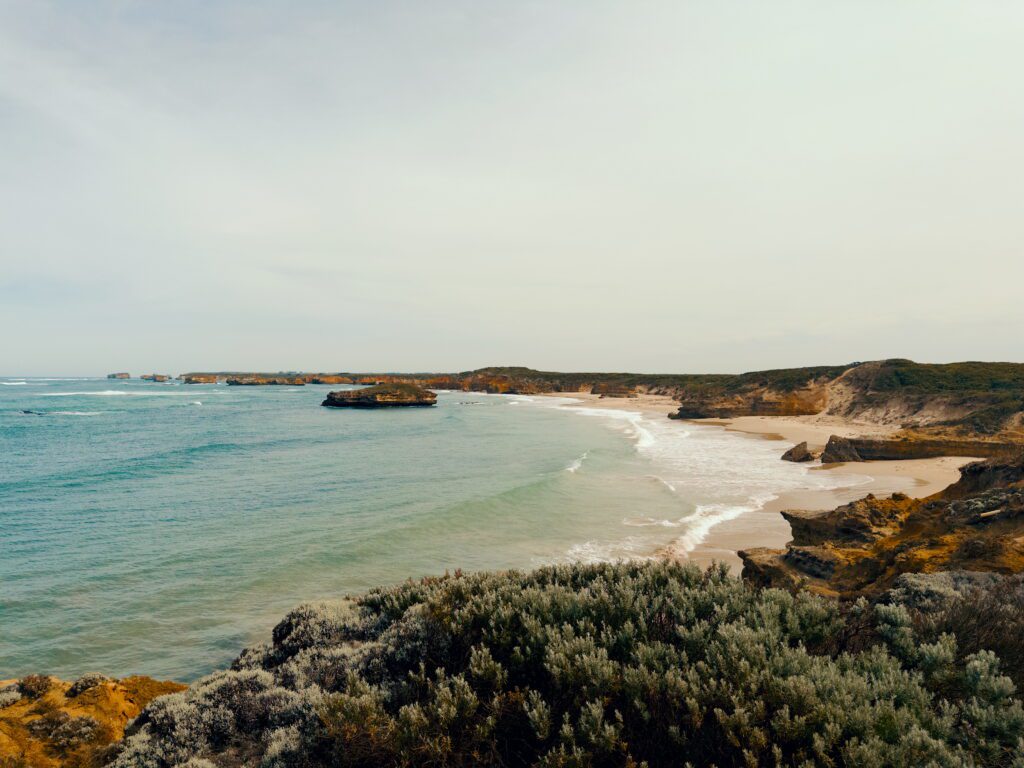
These two bays have spectacular views of the expansive coastline and beaches of the coast of Australia. There are designated parking spaces and short walks to viewpoints for each of these bays.
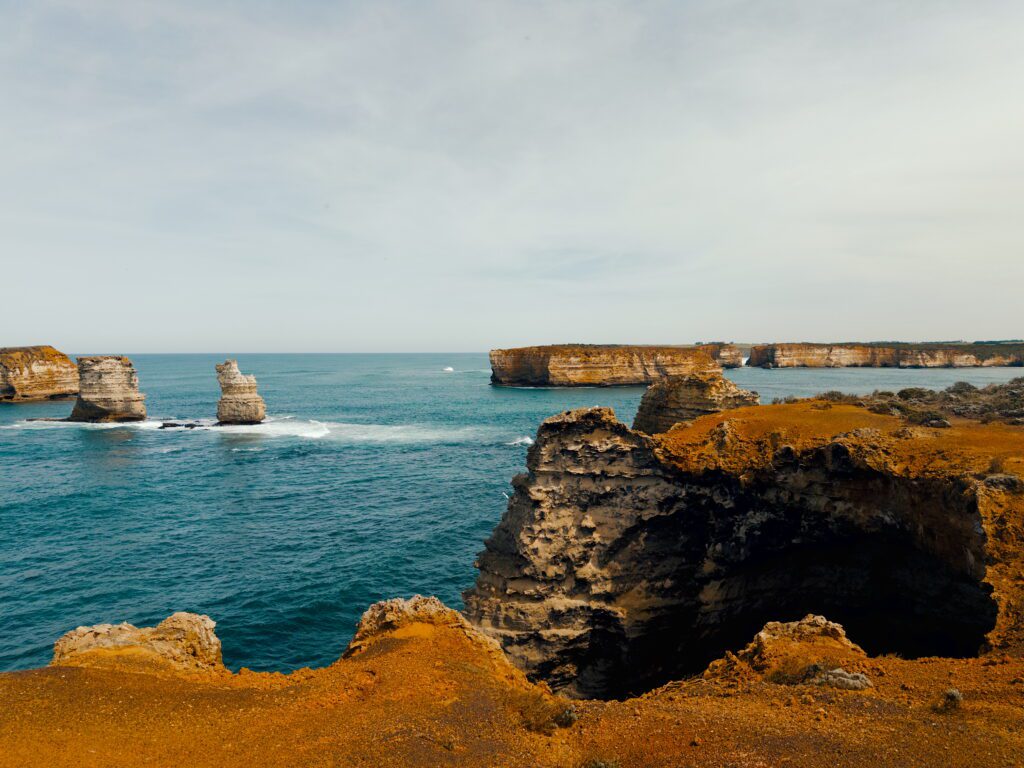
Warrnambool - the End of the Great Ocean Road
Technically, Allansford is the official end of the Great Ocean Road (although the road along the coast continues). If you continue on the coastal road for less than 20 minutes, you will reach Warrnambool, the unofficial end of the road and the location that is often mentioned online. It has a few beaches that can be used for relaxing, swimming, or surfing. In the winter, the Southern Right Whales use the eastern bay of the town to nurse their young and you can see them from the coast and on whale-watching tours.
Port Fairy
Although not officially on the Great Ocean Road, Port Fairy is worth the stop after you’ve finished exploring the coastline from the iconic road trip. This town still boasts much of its historic charm, which is best exhibited when walking around the central part of town. You should also walk along the Moyen river and along the beach front to see some beautiful homes and ocean landscapes.
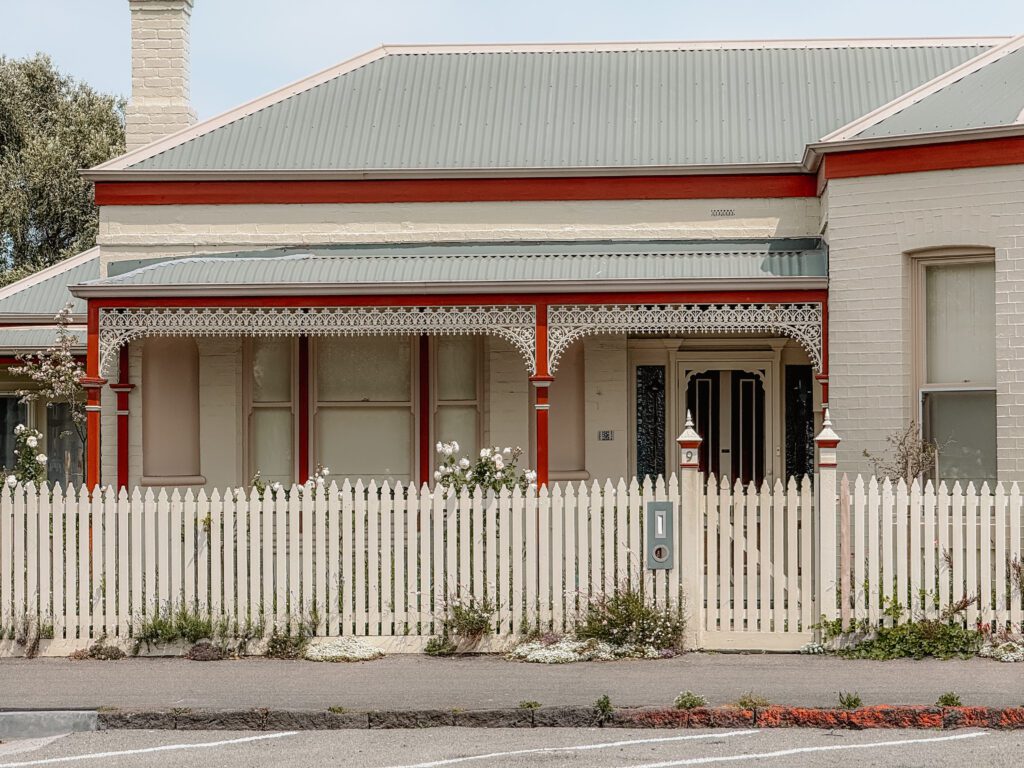
Possible Road Trip Itineraries
To see the Twelve Apostles for sunset and sunrise
Day 1
Minimum Drive Time: 4 hours (280 kilometers/175 miles)
Potential Stops:
- Memorial Arch at Eastern View
- Lorne
- Teddy’s Lookout
- Kafe Koala and the Kennett River Nature Walk
- Apollo Bay and Beach
- Gibson Steps
- Twelve Apostles
Accommodations: Port Campbell
Day 2
Minimum Drive Time to Return to Melbourne: 4 hours, 30 minutes (370 kilometers/230 miles)
Potential Stops:
- Twelve Apostles
- Loch Ard Gorge and Razorback Lookout
- London Bridge
- The Grotto
- Bay of Martyrs and Bay of Islands
- Port Fairy
Return to Melbourne via the inland road or continue to Adelaide via the ocean road or through Grampians National Park
For an even amount of driving every day
Day 1
Minimum Drive Time: 3 hours (190 kilometers/120 miles)
Potential Stops:
- Memorial Arch at Eastern View
- Lorne
- Teddy’s Lookout
- Kafe Koala and the Kennett River Nature Walk
- Apollo Bay and Beach
Accommodations: Apollo Bay
Day 2
Minimum Drive Time: 2 hours, 40 minutes (185 kilometers/115 miles)
Potential Stops:
-
- Great Otway National Park and Cape Otway Lightstation
- Gibson Steps
- Twelve Apostles
- Loch Ard Gorge and Razorback Lookout
- London Bridge
- The Grotto
- Bay of Martyrs and Bay of Islands
- Port Fairy
Accommodations: Port Fairy
Day 3
Minimum Drive Time to Return to Melbourne: 3 hours, 30 minutes (280 kilometers/175 miles)
Potential Stops: In this option, you can take a slow morning in Port Fairy before continuing onto Melbourne, Grampians National Park, or Adelaide at your own pace.
To see the Twelve Apostles for sunset and sunrise
Day 1
Minimum Drive Time: 3 hours (190 kilometers/120 miles)
Potential Stops:
- Memorial Arch at Eastern View
- Lorne
- Teddy’s Lookout
- Kafe Koala and the Kennett River Nature Walk
- Apollo Bay and Beach
Accommodations: Apollo Bay
Day 2
Minimum Drive Time: 1 hour, 30 minutes (100 kilometers/65 miles)
Potential Stops:
- Great Otway National Park and Cape Otway Lightstation
- Gibson Steps
- Twelve Apostles
Accommodations: Port Campbell
Day 3
Minimum Drive Time to Return to Melbourne: 4 hours, 30 minutes (370 kilometers/230 miles)
Potential Stops:
- Twelve Apostles
- Loch Ard Gorge and Razorback Lookout
- London Bridge
- The Grotto
- Bay of Martyrs and Bay of Islands
- Port Fairy
Return to Melbourne via the inland road or continue to Adelaide via the ocean road or through Grampians National Park
To take in all the views, easy driving, and beach days
Day 1
Minimum Drive Time: 3 hours (190 kilometers/120 miles)
Potential Stops:
- Memorial Arch at Eastern View
- Lorne
- Teddy’s Lookout
- Kafe Koala and the Kennett River Nature Walk
- Apollo Bay and Beach
Accommodations: Apollo Bay
Day 2
Minimum Drive Time: 1 hour, 30 minutes (100 kilometers/65 miles)
Potential Stops:
- Great Otway National Park and Cape Otway Lightstation
- Gibson Steps
- Twelve Apostles
Accommodations: Port Campbell
Day 3
Minimum Drive Time: 1 hour, 10 minutes (90 kilometers/55 miles)
Potential Stops:
- Twelve Apostles
- Loch Ard Gorge and Razorback Lookout
- London Bridge
- The Grotto
- Bay of Martyrs and Bay of Islands
- Port Fairy
Accommodations: Port Fairy
Day 4
Minimum Drive Time to Return to Melbourne: 4 hours, 30 minutes (370 kilometers/230 miles)
Potential Stops: In this option, you can take a slow morning in Port Fairy before continuing onto Melbourne, Grampians National Park, or Adelaide at your own pace.
Read More About the Blueprint Travelers' Personal Experience Along the Great Ocean Road
Update 45: Driving the Great Ocean Road, Australia’s Famous Road Trip from Melbourne
We did our first Australian road trip, driving the Great Ocean Road, to admire the natural beauty of the south-eastern Australian coast and Grampians National Park in Victoria.

